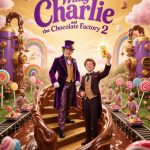The Art of Storytelling: 10 Animated Films That Changed Cinema

Related Movies:
Related Movies:
Related Movies:
Related Movies:
Related Movies:
Related Movies:
Related Movies:
Coraline (2009) – Movie Review
Plot Overview
Coraline (2009) is a dark fantasy stop-motion animated film directed by Henry Selick, based on the novella by Neil Gaiman. The story follows Coraline Jones (voiced by Dakota Fanning), a curious and adventurous young girl who moves with her parents to a new home in a secluded part of Oregon. Feeling neglected and bored, Coraline discovers a hidden door in her house that leads to an alternate dimension—a parallel world where everything seems better: her “Other Mother” (voiced by Teri Hatcher) is loving and attentive, and the inhabitants of the Other World are more colorful and exciting.
However, as Coraline spends more time in the alternate world, she realizes that it hides dark secrets, and her “Other Mother” has sinister plans. Coraline must find a way to escape and save her real parents from the clutches of the Other Mother before it’s too late.
Voice Performances
Dakota Fanning delivers a remarkable performance as Coraline, capturing the character’s spunk, independence, and vulnerability. Fanning perfectly portrays Coraline’s wide range of emotions—from initial curiosity to fear and determination—making her a relatable and brave protagonist. Teri Hatcher’s dual role as both Coraline’s real mother and the sinister Other Mother is masterfully done, with Hatcher giving each version of the character distinct personalities. The voice acting across the board, including supporting roles by Keith David, John Hodgman, and Jennifer Saunders, adds depth and atmosphere to the film.
Animation and Visuals
The stop-motion animation in Coraline is stunning, with intricate details that bring the eerie world to life. The alternate world is beautifully designed, with vibrant colors and exaggerated features that contrast sharply with the dull, gray reality of Coraline’s life. The striking visuals not only add to the film’s atmosphere but also help to underscore the thematic contrasts between the two worlds. The creepy, surreal designs of the Other World, especially the Other Mother’s button eyes and the peculiar inhabitants, create an unsettling feeling that stays with the viewer long after the film ends. The animation also excels in creating expressive characters, with Coraline’s movements and facial expressions conveying a wide array of emotions.
Tangled (2010) – Movie Review
Plot Overview
Tangled (2010) is a captivating animated film from Walt Disney Animation Studios, loosely based on the German fairy tale Rapunzel by the Brothers Grimm. Directed by Nathan Greno and Byron Howard, the film tells the story of Rapunzel (voiced by Mandy Moore), a princess with long, magical hair who has been trapped in a secluded tower for most of her life. Raised by the overbearing Mother Gothel (voiced by Donna Murphy), Rapunzel is kept hidden away from the world in order to protect her magical powers, which have the ability to heal and grant eternal youth.
On her 18th birthday, Rapunzel longs for freedom and adventure, and her wish comes true when a charming rogue named Flynn Rider (voiced by Zachary Levi) stumbles upon her tower. Together, they embark on a thrilling journey to see the floating lanterns that Rapunzel has dreamed about her whole life, while uncovering secrets about her past and facing challenges from both external threats and internal fears.
Voice Performances
Mandy Moore shines as Rapunzel, bringing warmth, sincerity, and a sense of wonder to the character. Moore perfectly captures Rapunzel’s journey from an innocent, sheltered girl to a brave and self-aware woman, with a voice that conveys both her optimism and the growing strength within her. Zachary Levi’s Flynn Rider provides a great contrast to Rapunzel’s innocence with his witty, roguish charm. Levi’s comedic timing and chemistry with Moore make their dynamic one of the film’s most enjoyable aspects.
The supporting cast, including Donna Murphy as the manipulative Mother Gothel and Brad Garrett as the thug-like horse Maximus, adds depth and humor to the film. Murphy’s voice performance is particularly impressive, bringing a menacing yet vulnerable quality to Mother Gothel, making her a memorable villain.
Animation and Visuals
The animation in Tangled is stunning, with vibrant, rich visuals that bring the fairy-tale world to life. The lush, colorful environments—from the towering, majestic forest to the bustling streets of the kingdom—are beautifully rendered, immersing the viewer in Rapunzel’s world. The animation of Rapunzel’s magical hair is particularly impressive, with it flowing and moving like a living entity, and the sequences that showcase the hair’s magic are visually breathtaking.
The film’s standout moment is the sequence of the floating lanterns, where Rapunzel and Flynn drift in a boat under a sky filled with thousands of glowing lanterns. This visually striking scene is one of the most beautiful and memorable moments in recent animated cinema.
Toy Story (1995) – Movie Review
Plot Overview
Toy Story (1995) is the groundbreaking animated film from Pixar, marking the first feature-length movie entirely created through computer-generated imagery (CGI). Directed by John Lasseter, the film tells the story of a group of toys that come to life when their owner, Andy, isn’t around. The central characters are Woody (voiced by Tom Hanks), a cowboy doll and the leader of the toys, and Buzz Lightyear (voiced by Tim Allen), a new action figure who arrives in Andy’s room and believes himself to be a real space ranger.
As Buzz becomes more popular with Andy, Woody’s jealousy begins to grow, leading to a series of misadventures. When both Woody and Buzz are accidentally left behind during a move, they must work together to navigate a dangerous world outside Andy’s room and return home before it’s too late.
Voice Performances
The voice cast is one of Toy Story’s greatest strengths. Tom Hanks delivers a warm and iconic performance as Woody, the loyal, self-doubting cowboy who is trying to come to terms with his place in Andy’s life. Hanks brings depth to the character, making Woody relatable as he grapples with feelings of jealousy and fear of being replaced. Tim Allen’s portrayal of Buzz Lightyear is equally memorable, with his confident, space ranger persona that masks his insecurities and eventual realization that he is just a toy. The dynamic between Woody and Buzz drives the heart of the film, with both characters evolving and learning from each other.
The supporting cast, including Don Rickles as Mr. Potato Head, Jim Varney as Slinky Dog, and Wallace Shawn as Rex, all add layers of humor and personality to the ensemble of toys. Each voice actor perfectly captures the essence of their respective characters, creating a memorable cast that still resonates today.
Animation and Visuals
For its time, the animation in Toy Story was revolutionary. Pixar’s use of CGI to create a fully realized world where toys come to life was groundbreaking in 1995. The visuals, while dated by today’s standards, still hold up in terms of their charm and attention to detail. The textures, lighting, and character designs were incredibly innovative for an animated feature, setting the stage for future CGI films.
The animation not only brought the toys to life in an imaginative and engaging way but also showcased the vastness of the world from their perspective. The scenes where Woody and Buzz explore the human-sized environment, navigating the world from the ground up, were visually exciting and gave the toys a sense of depth and purpose.
A Bug’s Life (1998) – Movie Review
Plot Overview
A Bug’s Life (1998) is an animated film from Pixar Animation Studios, directed by John Lasseter and Andrew Stanton. The film tells the story of Flik (voiced by Dave Foley), an inventive but clumsy ant who lives in a colony on a farm. When Flik accidentally ruins the food supply meant to appease a group of ruthless grasshoppers led by the menacing Hopper (voiced by Kevin Spacey), he is banished from the colony. However, Flik refuses to give up and sets off to find “warriors” to help defeat the grasshoppers and save his colony.
Along the way, Flik recruits a group of circus bugs, who are unaware of their true purpose but quickly become an unlikely team of heroes. As they work together to build a plan to stop the grasshoppers, Flik learns important lessons about leadership, teamwork, and believing in himself.
Voice Performances
The voice cast of A Bug’s Life is top-notch, with Dave Foley bringing Flik to life with a perfect blend of sincerity, awkwardness, and determination. His performance captures the essence of Flik’s journey from an underdog inventor to a confident leader. Kevin Spacey’s portrayal of Hopper is equally strong, giving the character a sinister edge while also adding complexity to the role of the villain. The supporting cast, including Julia Louis-Dreyfus as the graceful princess Atta, and a diverse ensemble of circus bugs, each with their own quirks and personalities, adds humor and charm to the story.
The chemistry between the characters is one of the film’s highlights, with the dynamic between Flik and the circus bugs providing much of the comedy and heart. Each bug brings something unique to the table, and their camaraderie and eventual teamwork play a crucial role in the film’s overall message.
Animation and Visuals
The animation in A Bug’s Life is stunning, with Pixar once again pushing the boundaries of CGI technology to create a vibrant and immersive world. The details in the environment—such as the towering blades of grass, dewdrops, and the miniature world that the bugs inhabit—create a visually rich backdrop that makes the bugs’ world feel alive and real. The character designs are imaginative and full of personality, from the lovable but clueless circus bugs to the menacing grasshoppers.
The visual storytelling is complemented by the film’s excellent use of color, lighting, and texture, which enhance the whimsical and dramatic elements of the narrative. The scenes in which Flik and the other bugs interact with their environment are particularly fun to watch, as the tiny creatures navigate a world that is both familiar and overwhelming.
Turbo (2013) – Movie Review
Plot Overview
Turbo (2013), directed by David Soren, is an animated sports comedy that follows the story of a garden snail named Theo (voiced by Ryan Reynolds), who dreams of going fast. Living a simple life among his fellow snails, Theo feels out of place, believing he is meant for more than the slow-paced existence of his kind. After a freak accident involving a high-speed car, Theo suddenly finds himself with extraordinary speed, transforming from an average garden snail to the fastest creature on Earth.
Embracing his newfound abilities, Theo adopts the name “Turbo” and sets his sights on competing in the Indianapolis 500, the most prestigious car race in the world. With the help of a group of misfit snails, including his loyal friend Chet (voiced by Paul Giamatti), Turbo embarks on a journey to prove that even the smallest, most unlikely heroes can achieve the impossible.
Voice Performances
Ryan Reynolds brings his trademark charm and wit to the character of Turbo, infusing the snail with humor, determination, and heart. Reynolds perfectly captures Turbo’s youthful optimism and belief in his own abilities, making him a relatable and likable protagonist. Paul Giamatti as Chet provides an excellent counterbalance, with his voice performance adding a sense of cautious realism and a touch of comic relief. The dynamic between Turbo and Chet drives much of the emotional core of the film, as Chet’s skepticism eventually gives way to support for his friend’s dreams.
The supporting cast, including Michael Peña as a mechanic named Tito and Samuel L. Jackson as the smooth-talking racer, Whiplash, bring their characters to life with personality and humor. While their roles are more comedic, they help round out the film’s world and add fun moments to the story.
Animation and Visuals
The animation in Turbo is bright, energetic, and dynamic, making the most of its high-speed racing sequences. The visual contrast between the slow, slithering pace of the snails and the rapid-motion shots that follow Turbo’s journey at top speed is one of the film’s standout features. The use of color and the fluidity of the animation during the racing scenes adds excitement and drama, while the slower-paced moments emphasize the contrast between Turbo’s humble beginnings and his dreams of speed and glory.
The depiction of the Indianapolis 500 race, with its intricate details and large-scale environment, is visually impressive, making the snail’s race through the human world both thrilling and entertaining. The film also does a great job of using the environment, from the garden where the snails live to the bustling world of racing, to create a rich and immersive world.
Astro Boy (2009) – Movie Review
Plot Overview
Astro Boy (2009) is a computer-animated science fiction film directed by David Bowers, based on Osamu Tezuka’s iconic manga and anime of the same name. The film follows the story of Tobio, a young boy living in a futuristic world who is tragically killed in an accident. His father, Dr. Tenma (voiced by Nicolas Cage), a brilliant scientist, creates a robot in his image, named Astro Boy (voiced by Freddie Highmore), hoping to fill the void left by his son’s death.
Astro Boy, equipped with advanced artificial intelligence, incredible strength, and rocket-powered abilities, embarks on a journey of self-discovery. As he begins to explore the world outside of Dr. Tenma’s lab, Astro Boy faces challenges that force him to question what it means to be human. He becomes entangled in a political conflict between robots and humans, all while struggling to understand his own purpose and identity.
Voice Performances
Freddie Highmore brings a sense of innocence and curiosity to the character of Astro Boy, effectively portraying the robot boy’s confusion about his existence and his determination to find his place in the world. His performance adds emotional depth to the character, making Astro Boy a relatable and sympathetic protagonist. Nicolas Cage voices Dr. Tenma with the right mix of grief and scientific ambition, while Donald Sutherland’s role as the villainous President Stone adds a layer of cold, power-hungry authority to the story.
The supporting cast, including Kristen Bell, Nathan Lane, and Bill Nighy, bring various characters to life with warmth, humor, and menace, enhancing the film’s emotional and narrative complexity.
Animation and Visuals
The animation in Astro Boy is visually striking, with the futuristic cityscapes, high-tech robots, and vibrant colors creating a dynamic and engaging world. The sleek, polished design of the city contrasts with the gritty, darker environments where the conflict between robots and humans takes place. The action sequences, particularly those involving Astro Boy’s rocket-powered abilities, are exciting and fast-paced, while the visual design of the robots and characters adds a playful, yet futuristic aesthetic that mirrors the film’s themes.
While the CGI animation is impressive for its time, it can occasionally feel dated by today’s standards, but the film’s world-building and character designs still stand out as imaginative and fun.
Sammy’s Adventures: The Secret Passage (2010) – Movie Review
Plot Overview
Sammy’s Adventures: The Secret Passage (also known as Sammy 2 in some regions) is an animated family film directed by Ben Stassen. This sequel to Sammy’s Adventures: The Secret Passage follows the adventures of Sammy, a sea turtle, and his companion Ray, as they continue their journey through the vast oceans. The film centers on Sammy’s new life in the ocean, as he faces new challenges and adventures, while trying to protect his loved ones.
In Sammy 2, the story picks up as Sammy and Ray are captured by humans and taken to a marine aquarium. There, they must figure out how to escape and return to the wild. Along the way, they encounter new characters, including a group of other sea creatures, and ultimately discover the importance of freedom and family.
Voice Performances
The voice cast for Sammy 2 includes a mix of seasoned voice actors, with the characters of Sammy and Ray continuing their journey from the first film. The performances are heartwarming, with a focus on the camaraderie between Sammy and Ray, as well as the strong emotional connection they share with their families. The characters convey their personal growth, concerns, and bravery through the voice performances, making them relatable for young viewers.
While the film primarily targets children, the voice actors bring a playful and engaging quality to their roles, keeping the story lively and easy to follow.
Animation and Visuals
The animation in Sammy 2 is vibrant, colorful, and visually engaging. The underwater scenes are especially stunning, with richly detailed marine environments full of life, coral reefs, and a variety of sea creatures. The film uses 3D animation to bring the characters and the ocean world to life, creating a rich, immersive visual experience that will captivate younger audiences. The action sequences, particularly those involving escape attempts and underwater adventures, are fluid and dynamic, making the film both entertaining and visually appealing.
While the animation is generally polished, it may feel somewhat conventional compared to other animated films, but it still effectively captures the spirit of adventure and wonder.
Mr. Peabody & Sherman (2014) – Movie Review
Plot Overview
Mr. Peabody & Sherman (2014) is a fun and adventurous animated film from DreamWorks Animation, based on the classic characters from the 1950s TV series The Adventures of Rocky and Bullwinkle and Friends. The film centers on Mr. Peabody (voiced by Ty Burrell), an incredibly intelligent, highly accomplished, and lovable dog, who has adopted a human boy named Sherman (voiced by Max Charles). Together, they use a time-traveling machine called the WABAC to journey through history, meet famous figures, and experience key moments in time.
When Sherman gets into trouble at school, he takes the WABAC machine on a trip to the past, accidentally altering history. Mr. Peabody and Sherman must then race against time to set things right, while also learning valuable lessons about family, responsibility, and identity along the way.
Voice Performances
Ty Burrell brings charm and warmth to the character of Mr. Peabody, perfectly capturing the dog’s intelligence, dry wit, and paternal affection for Sherman. Burrell’s performance adds depth to the character, balancing Mr. Peabody’s encyclopedic knowledge with moments of vulnerability and love for his son. Max Charles, voicing Sherman, does a great job portraying the young boy’s mix of curiosity, excitement, and occasional mischief. The chemistry between Burrell and Charles is heartwarming, making their father-son relationship the emotional core of the film.
The supporting cast, including Stephen Colbert and Leslie Mann as Sherman’s biological parents, adds a humorous touch to the story, especially as they try to come to terms with the reality of their son’s unconventional family dynamic.
Animation and Visuals
The animation in Mr. Peabody & Sherman is visually striking, with bright, vibrant colors and highly detailed environments that bring the world of time travel to life. The historical settings, such as ancient Egypt, Renaissance Florence, and the French Revolution, are recreated with stunning visual detail, making the WABAC machine’s adventures feel exciting and immersive. The animation style is clean and polished, with fluid motion during action sequences and an overall playful tone that matches the film’s lighthearted narrative.
One of the standout features of the animation is the character design, particularly Mr. Peabody himself, whose anthropomorphic dog features, complete with glasses and a bowtie, are endearing and instantly recognizable.
The Queen’s Corgi (2019) – Movie Review
Plot Overview
The Queen’s Corgi (2019) is a lighthearted animated comedy directed by Ben Stassen and Vincent Kesteloot, focusing on the life of a pampered corgi named Rex, who is the Queen’s favorite dog. Living a life of luxury in Buckingham Palace, Rex is spoiled and adored but soon finds himself in a whirlwind adventure after being unceremoniously banished from the palace following a series of events that upset his privileged existence.
After being thrust into the real world, Rex must navigate the streets of London and learn what it truly means to be a dog. Along the way, he meets a variety of quirky characters, including a tough street dog named Charlie, who helps Rex adjust to his new life. As Rex learns valuable lessons about loyalty, friendship, and independence, he discovers what it means to be part of something bigger than himself.
Voice Performances
The voice cast in The Queen’s Corgi is vibrant and fun, with Jack Whitehall voicing Rex, bringing a mix of humor and charm to the character. Whitehall’s performance captures Rex’s initial arrogance and transformation into a more humble and likable dog, showing emotional depth behind the comedic antics. Other notable voices include Julie Walters, who voices the Queen’s assistant, and Tom Courtenay, who plays a key role in Rex’s streetwise education. The performances are light and playful, helping to elevate the film’s fun and heartwarming tone.
Animation and Visuals
The animation in The Queen’s Corgi is colorful, engaging, and fits perfectly with the film’s comedic nature. The designs of the characters, especially Rex, are cute and expressive, with exaggerated features that add to the humor of the story. The palace scenes are designed with grandeur, emphasizing Rex’s privileged life, while the gritty streets of London provide a contrasting environment where Rex learns life’s harder lessons. The animation, while not groundbreaking, is effective in conveying the film’s lighthearted spirit, with fluid movements that make the characters’ emotions easy to read.











